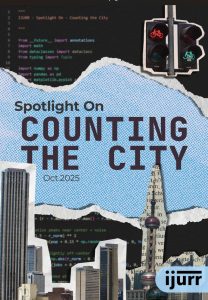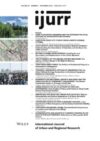
[Read the Spotlight On in pdf]
In the late 1950s, C. Wright Mills denounced the growing dominance of survey research in American sociology as a form of “abstracted empiricism,” warning that the discipline was becoming trapped in technical routines that generated data without meaning. For Mills, the fetish for questionnaires, statistical exactitude, and sampling obscured the broader task of linking personal troubles to public issues. He was witnessing the effects of the invention of random sampling and its magic and the appearance of standardized questionnaires as the main methodology in his discipline. He did not dislike surveys per se, but he thought that theory driven questions and hypotheses were crucial to give meaning to the overwhelming amount of information they provided. What people in his time needed, he thought, was a “a quality of mind that will help them to use information and to develop reason in order to achieve lucid summations of what is going on in the world and of what may be happening within themselves (Mills, 2000: 5). He called that quality of mind, the sociological imagination.
Today, amid the rise of big data and algorithmic analytics, the social sciences face a parallel predicament. The unprecedented availability of digital traces, predictive models, and automated classifications promises novel insights, but also threatens to reduce social life to decontextualized fragments of information. Revisiting Mills’s critique thus allows us to interrogate whether contemporary data practices reproduce the same technocratic tendencies he warned against—or whether they might be mobilized in ways that expand, rather than constrict, the sociological imagination, or the social sciences imagination to speak broadly to all of us.
In this Spotlight On series—Counting the City—we want to explore how these emerging data and methods are transforming urban research and practice. What kinds of urban knowledge are made possible by those new approaches? How do computational methods intersect existing ones? What are the ethical, political, and methodological implications of using big data to read the city? The pieces in this Spotlight series show us interesting answers to these questions and open new ones that may enhance our curiosity about using big data in our research.
On her piece, Wenfei Xu argues for this curiosity in an interesting way, saying that on the one hand big data may avoid some of the pre-categorization biases of censuses and other surveys and that we should consider them at least for triangulation, which should not remain a condition and possibility only for qualitative data. She frames her invitation in a provocative way: “Why not consider computation methods and big data as just a few ways amongst others that can shed light on the conditions and patterns of social activities and the way that heterogeneity of place can be brought to clearer delineation?” In her piece, she shows the potential of this curiosity through the work of the Urban Data Research Lab exploring neighborhood dynamics. As an example, mobility patterns based on cell phone data have enabled her and others better understand segregation with an agent-based perspective including daily patterns of movement instead of how it has traditionally been measured: only on a residential basis according to the census block of our home. She also shows the potential of digitalizing historical maps and credit data to better explain processes of racial exclusion and segregation through home buying loan allocations. This is something also increasingly and interestingly used in Economics as well, applying machine learning techniques to historical administrative data to see consequences today.
In his essay City as Data, Fábio Duarte reflects on how everyday urban life can be reconceptualized through the lens of ubiquitous data and computational tools. Drawing on projects from the MIT Senseable City Lab, he illustrates how seemingly mundane activities—such as buying coffee, jogging, or photographing insects—generate rich datasets that, when aggregated and analyzed, reveal broader patterns of consumption, mobility, health, biodiversity, and even emotional connections to urban nature. Examples include identifying immigrant communities through beverage consumption data, mapping nutritional landscapes via restaurant menus, and quantifying global perceptions of biophilia using AI. While highlighting the transformative potential of these methods for understanding cities in novel ways, Duarte also warns of the ethical challenges that arise when data collected for one purpose is repurposed for another, underscoring the dual scholarly responsibility to innovate analytically while remaining vigilant about privacy and misuse.
In their essay On Pursuing a Critical Reasoning of the Science of Cities and Their Use of Big Data and AI, Ana Jaramillo and Nandini Iyer precisely address these ethical challenges and some other issues. While acknowledging the promise of big data and AI for understanding complex urban systems, they foreground three central concerns: the geographical inequality of research outputs that privileges certain “global cities” while rendering others invisible; the methodological invisibility of populations excluded or misrepresented in large-scale datasets; and the lack of interdisciplinary collaboration, which risks reinforcing stereotypes and producing harmful policy recommendations. Situating these critiques within debates on sustainability, ethics, and data colonialism, the authors argue that cities are often treated as data extraction sites where individual consent and positionality are sidelined. They call for more critical, interdisciplinary, and community-led approaches—including positionality statements and participatory data practices—that could democratize the Science of Cities and align it more closely with equity, accountability, and lived urban realities.
Finally, in Cities out of Data?, João Porto de Albuquerque (director of the Urban Big Data Centre) invites us to actively engage in counteracting those biases and offers great metaphors to do it. He invites us to mind (the data) gap and to do data gardening instead of data mining. Like in the previous essay, he argues that despite the proliferation of digital traces and sensing technologies, data remain deeply uneven, privileging wealthy urban areas while systematically misrepresenting or excluding poorer neighborhoods. Yet, Joao makes a very interesting remark about this and that is that data inequalities relate in complex ways to socioeconomic inequalities not always reflecting them in the simple more intuitive ways. Their relation remains an interesting empirical question. At the same time, he proposes a way to counteract systematic missing data from underprivileged and underrepresented. Rejecting technocratic fixes, he advocates for “participatory urban analytics,” inspired by Paulo Freire’s pedagogy, which reframes data generation as a dialogic and emancipatory process—what he calls “data gardening.” Through projects like Waterproofing Data, he demonstrates how co-creating data with marginalized residents not only fills gaps but also fosters critical consciousness, challenges historical marginalization, and opens pathways toward more just and plural urban futures.
Together, these contributions to the debate on cities, data, and computation highlight both the analytical potential and the ethical perils of the current datafication of urban life. Read together, these essays remind us that data are not neutral reflections of cities but constitutive of urban realities and power relations. To exercise a sociological imagination in this context means connecting the personal traces embedded in everyday digital practices to broader structures of inequality, epistemology, and politics—while insisting on alternative ways of knowing and producing urban futures that are democratic, plural, just and scientifically innovative.
About María José Álvarez

Majo Álvarez is a Full Professor of Sociology at the Universidad de los Andes. Her main concern and interest is social inequality, which she approaches through a perspective that combines statistics with qualitative work, with particular emphasis on networks and their segregation. She is also interested in public policies and interventions in general that can help reduce inequality and improve well-being.
About Andrés Mauricio Toloza

Mauricio Toloza is an undergraduate student of Political Science with a minor in computational mathematics at Universidad de los Andes. His interests are related to computational social science, urban studies, inequality, and public opinion.
All essays on Counting the City
Editorial: Counting the City
María José Álvarez-Rivadulla & Andrés Mauricio Toloza
Beyond “Data Good” or “Data Bad”
Wenfei Xu
City as Data
Fábio Duarte
On pursuing a critical reasoning of the Science of Cities and their use of Big Data and AI
Ana María Jaramillo & Nandini Iyer
Cities out of data?
João Porto de Albuquerque
Published online October 2025
© 2025 THE AUTHOR. INTERNATIONAL JOURNAL OF URBAN AND REGIONAL RESEARCH, PUBLISHED BY JOHN WILEY & SONS LTD UNDER LICENSE BY URBAN RESEARCH PUBLICATIONS LIMITED
This is an open access article under the terms of the Creative Commons Attribution-NonCommercial-NoDerivs License, which permits use and distribution in any medium, provided the original work is properly cited, the use is non-commercial and no modifications or adaptations are made.
